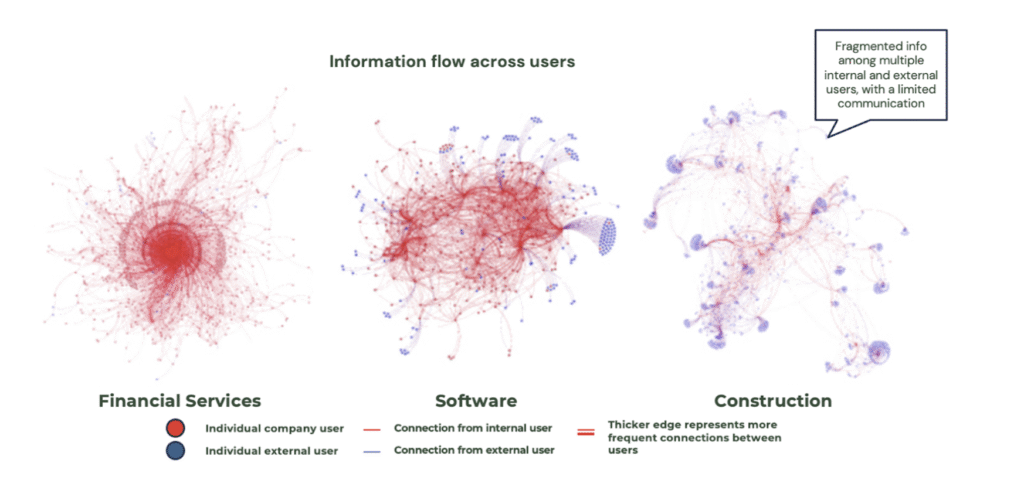Disclaimer
"The Challenge of Construction Digitization," has been provided by Zacua Ventures. All original content is owned by them. AmpliNxt is pleased to present this report for informational purposes with the consent of Zacua Ventures.Written by Zacua Ventures Team.
Zacua Ventures is an early-stage VC focused on investments tackling the world's biggest challenges across Sustainability, Productivity and Urbanization and is backed by the most innovative corporates in the built world.


In this comparative view of information flow across users:
Financial services display highly centralized and coordinated communication.
Software companies demonstrate dense, iterative, peer-to-peer interaction.
Construction Industry, in stark contrast, reveals scattered user networks, disconnected clusters, and thin lines of collaboration between internal and external players.
This fragmentation mirrors what Hamzah presented in his book and during Zacua Ventures AGM: disconnected reports, out-of-date drawings, inconsistent field updates, and manual processes, many of which are still masked under the guise of “digitized” PDFs and Excel sheets.
Becoming Paperless: how to move forward?
Hamzah has outlined this framework in ¨a roadmap for sustainable tech adoption”, including the following steps:
Benchmark current processes
Involve Users early
Structure Implementation
Provide continuous Learning
Appoint internal Drivers
Evaluate, Report, and Scale successful outcomes
Finally, cultural change is as critical as technical change: fear of change, not lack of tools, is what derails most digital initiatives. Training, cross-functional pilots, and clear ownership are essential to lower barriers for field teams to take the responsibility of making everyone’s jobs easier and more efficient.